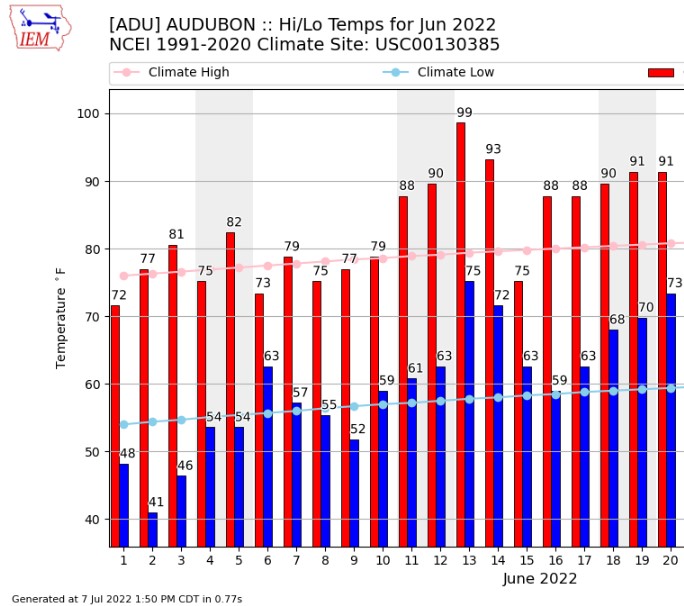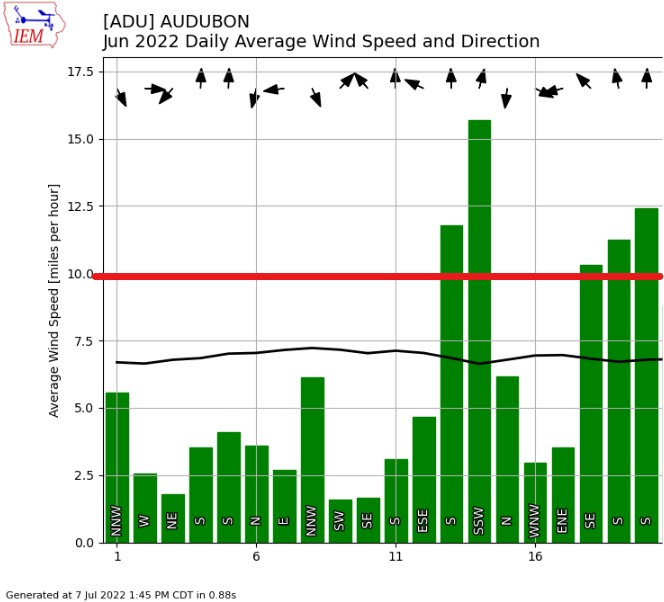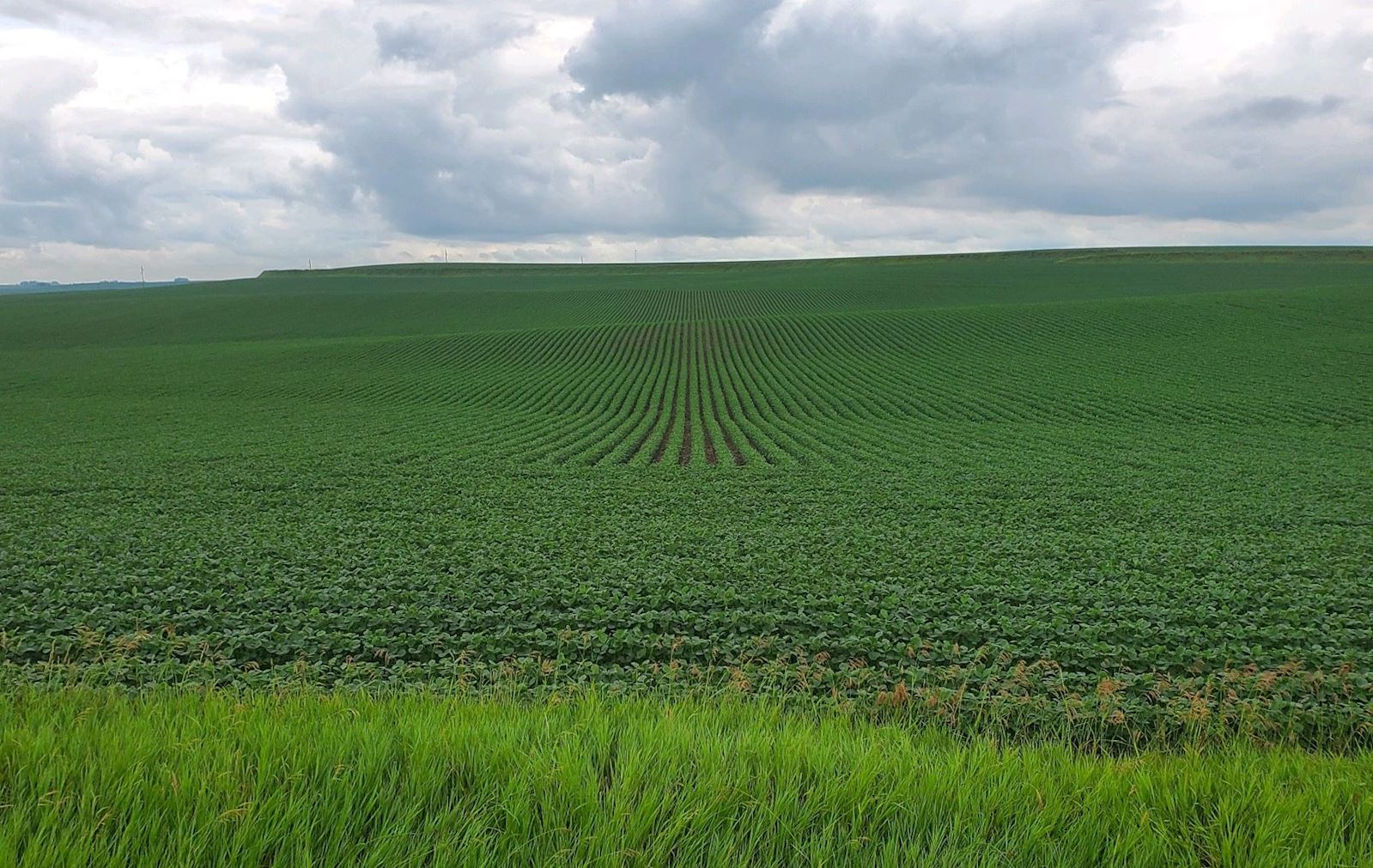July 8th, 2022
posted
by Lou Herbers on 7/8/2022
in
Weekly Newsletter

July 8th, 2022
Dicamba Injury To Soybeans
Over the past 10 days I have received numerous calls about cupped leaves in soybean fields. Based on my observations and experience almost all this cupping is the result of dicamba movement from fields sprayed in the prior three weeks with some type of labelled dicamba product. Additionally, I think that a very high percentage of these applications were made "on label" and by the cutoff date of June 20th. Below are several graphs summarizing the weather conditions for the month of June up to the June 20th deadline. In particular, focus on the 10 days leading up to June 20th.


As you can see, the conditions were present for off target movement of dicamba and didn't allow for many good application windows. Higher temperatures are more conducive for volatility, and we certainly had that.
It is evident to me and others in the industry that the application of dicamba in soybeans as it is currently allowed cannot be managed without the risk of movement to a susceptible soybean crop. Growers and custom applicators are making labelled application, but due to the nature of the dicamba chemistry, simply cannot keep that product on the intended target. Because almost all soybeans in this area are either Enlist or Extend, the dicamba injury is occurring primarily on Enlist soybeans. This had led to some theories about Enlist soybeans cupping from the Enlist application or that they cup more easily under stress. These theories are simply not true. I took the picture below yesterday in an area that has been exposed to little dicamba. As you can see the soybeans look healthy and show no cupping. This contrasts with the many fields in other areas exhibiting cupping due to various levels of exposure to dicamba.

I am sure the dicamba label will be under review again after this spraying season. Even if there are no changes to the label for 2023, we need to reevaluate application timing for next year. The following are my recommendations:
1.) Every growing season is different, so it is hard to make a one-size-fits-all rules. Dicamba applications in corn and soybeans need an earlier cutoff date than June 20th; possibly June 1st or May 25th. In soybeans a preemergent only application would be ideal. With additional supplies of both ExtendFlex and Enlist soybeans for 2023, the need to plant Extend only varieties should be greatly reduced. Keep in mind that all ExtendFlex and Enlist varieties can be sprayed with glufosinate (Liberty). We expect to see more supply and lower pricing on glufosinate in 2023.
2.) Both corn and soybean herbicide programs need to be designed upfront with overlapping, layered residual programs. I have stressed the importance of a two-pass program in corn. When initial applications are delayed until after corn emergence it becomes more difficult to control emerged weeds without the addition of dicamba. It is imperative that we control many weeds (waterhemp in particular) before they ever emerge. We have had excellent control in a high percentage of our corn fields this year where an overlapping two-pass system was used without the inclusion of dicamba. I've had questions about using safened dicamba products like Status or DiFlexx in corn. Yes, these products are safe to use on bigger corn but there is nothing in them that prevents them from volatilizing.
This week has brought 2+ inches of rain to most of the area. This rainfall combined with no additional dicamba applications makes me optimistic that we have seen the worst of the dicamba injury for this season and the soybeans will begin rapidly outgrowing the damage. Now is the time to evaluate the weed control system used this year and start making decisions about what products and traits to use in 2023.